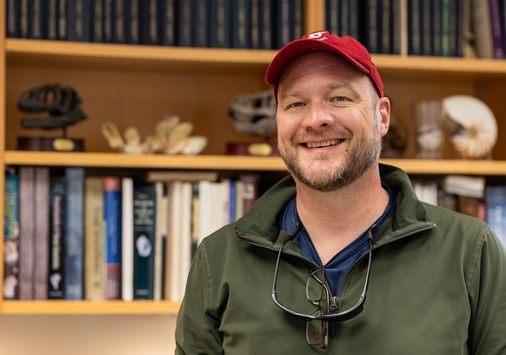Earth Sciences Professor Dave Goodwin and researchers at the California Academy of Sciences have collaborated on and developed an innovative new model to assess how the California economy might have fared without economic closures to slow the spread of the coronavirus pandemic.
It may be unusual for an earth scientist to develop an economic model, but Goodwin’s colleague Peter Roopnarine says that analyzing how stressors is similar to how earth scientists understand mass extinction events impacted prehistoric ecosystems.
A recent article in Phys.org notes:
“From galaxies to the cells in your body, complex systems have certain features in common,” Roopnarine says. One of these common features is being highly interconnected: what happens in one part of the system manifests in other parts. For a prehistoric environment, this might mean an asteroid decimates plant life resulting in the collapse of the reign of dinosaurs. For the economy, it could mean worker deaths from COVID in the agricultural sector lead to slowed food production and therefore negative impacts on the restaurant industry. It is these kinds of cascading effects on a system that the research team analyzed in this study.
By using data from the United States Bureau of Economic Analysis, the researchers determined the strength of connections between different economic sectors in various regions throughout California, allowing them to measure the susceptibility of each region to negative cascading effects such as those triggered by the pandemic. For public health experts and policymakers working to combat COVID-19 and future pandemics while minimizing economic impacts, this provides a foundation for building more robust mitigation and vaccination responses that target the most vulnerable regions.
“There are clear priorities for vaccination based on age and health care workers,” Roopnarine says. “But beyond that, our prioritization appeared to happen in a haphazard manner. Using our model, we can determine which workers are at greater risk of unemployment during a pandemic based on the sector they are in and which sectors are most important to prevent cascading economic damage. In other words, which industries should go back to work sooner to have the greatest health and economic outcomes.”









